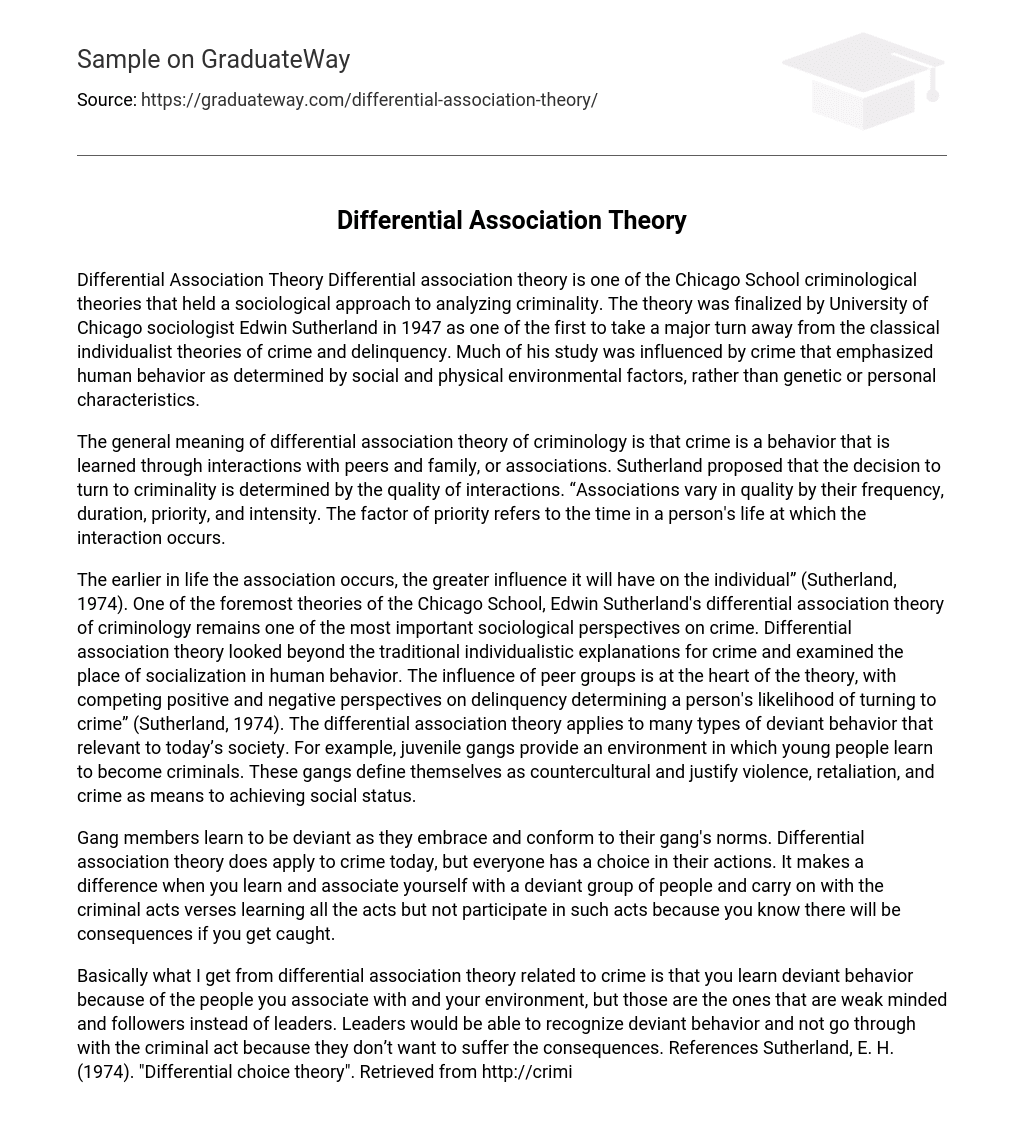Differential association theory is one of the Chicago School criminological theories that held a sociological approach to analyzing criminality. The theory was finalized by University of Chicago sociologist Edwin Sutherland in 1947 as one of the first to take a major turn away from the classical individualist theories of crime and delinquency. Much of his study was influenced by crime that emphasized human behavior as determined by social and physical environmental factors, rather than genetic or personal characteristics.
The general meaning of differential association theory of criminology is that crime is a behavior that is learned through interactions with peers and family, or associations. Sutherland proposed that the decision to turn to criminality is determined by the quality of interactions. “Associations vary in quality by their frequency, duration, priority, and intensity. The factor of priority refers to the time in a person’s life at which the interaction occurs.
The earlier in life the association occurs, the greater influence it will have on the individual” (Sutherland, 1974). One of the foremost theories of the Chicago School, Edwin Sutherland’s differential association theory of criminology remains one of the most important sociological perspectives on crime. Differential association theory looked beyond the traditional individualistic explanations for crime and examined the place of socialization in human behavior. The influence of peer groups is at the heart of the theory, with competing positive and negative perspectives on delinquency determining a person’s likelihood of turning to crime” (Sutherland, 1974).
The differential association theory applies to many types of deviant behavior that relevant to today’s society. For example, juvenile gangs provide an environment in which young people learn to become criminals. These gangs define themselves as countercultural and justify violence, retaliation, and crime as means to achieving social status.
Gang members learn to be deviant as they embrace and conform to their gang’s norms. Differential association theory does apply to crime today, but everyone has a choice in their actions. It makes a difference when you learn and associate yourself with a deviant group of people and carry on with the criminal acts verses learning all the acts but not participate in such acts because you know there will be consequences if you get caught.
Basically what I get from differential association theory related to crime is that you learn deviant behavior because of the people you associate with and your environment, but those are the ones that are weak minded and followers instead of leaders. Leaders would be able to recognize deviant behavior and not go through with the criminal act because they don’t want to suffer the consequences.
References
- Sutherland, E. H. (1974). “Differential choice theory”. Retrieved from http://criminology. fsu. edu/crimtheory/sutherland. html
- Siegel, L. J. (2011). Crime and criminology. Belmont, CA: Wadsworth.





